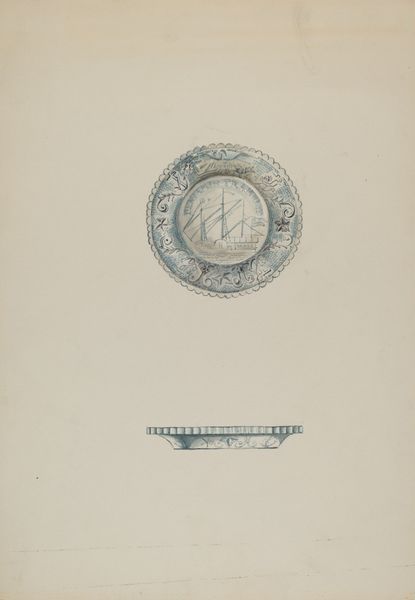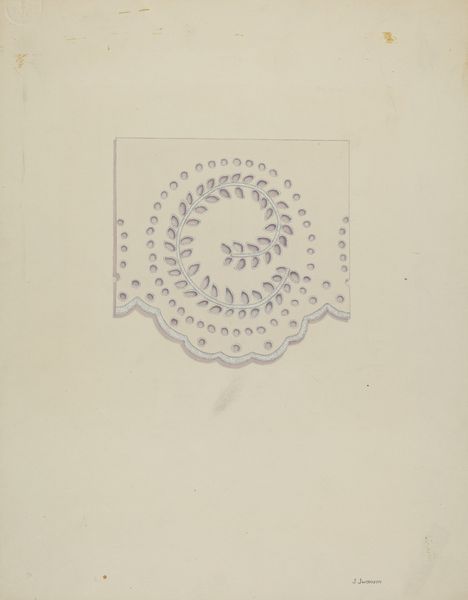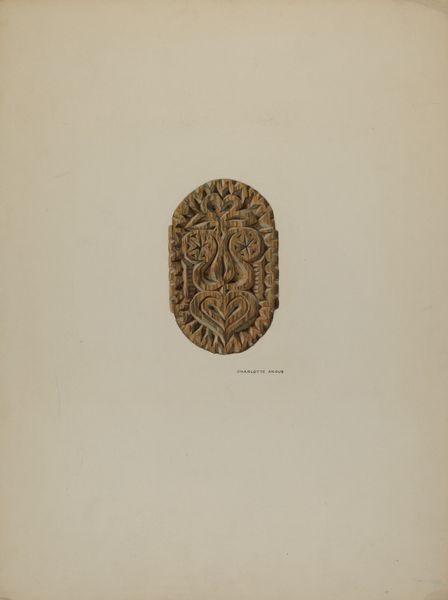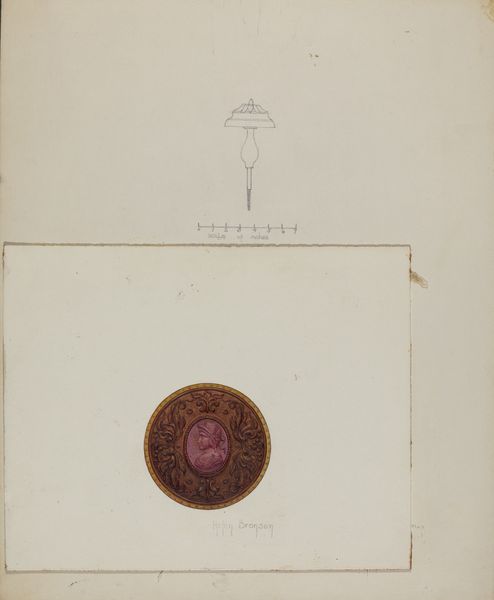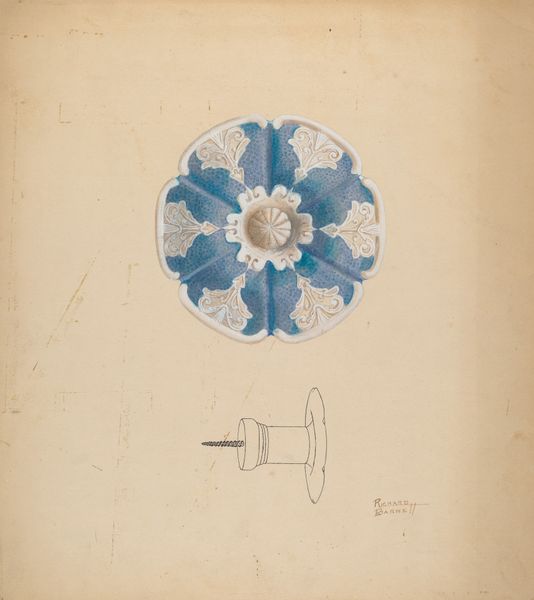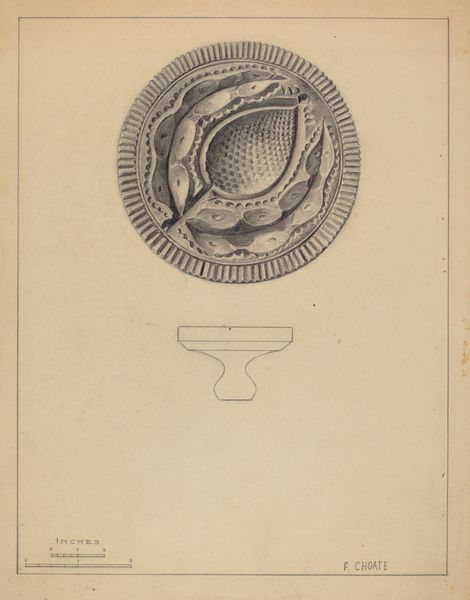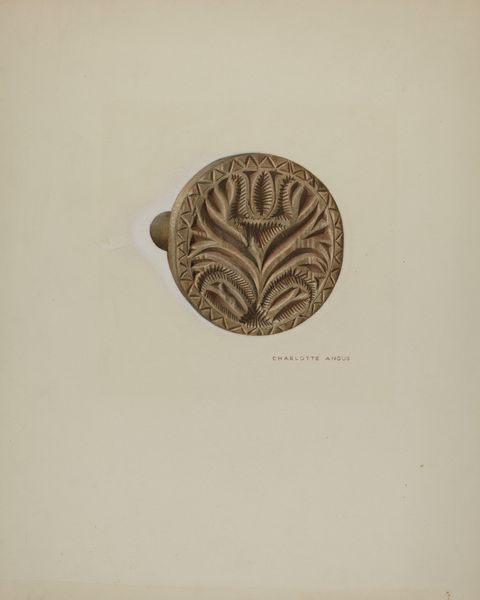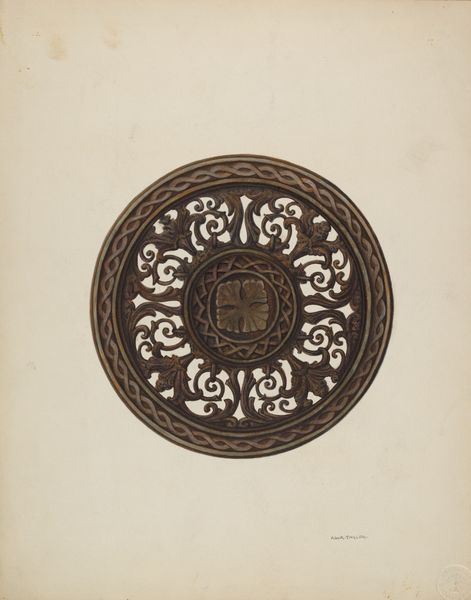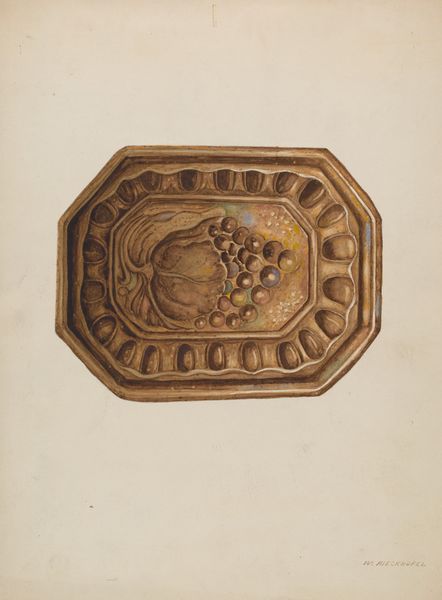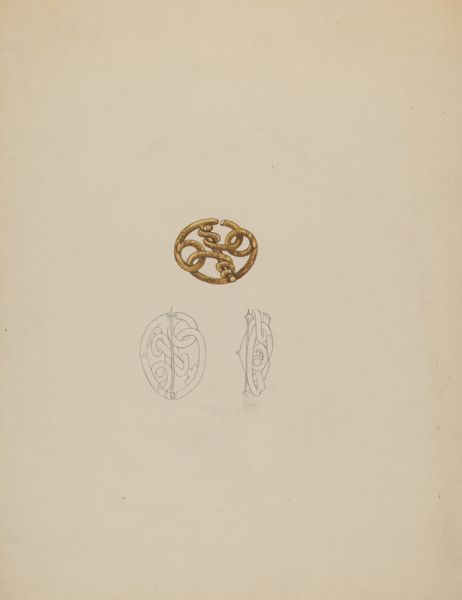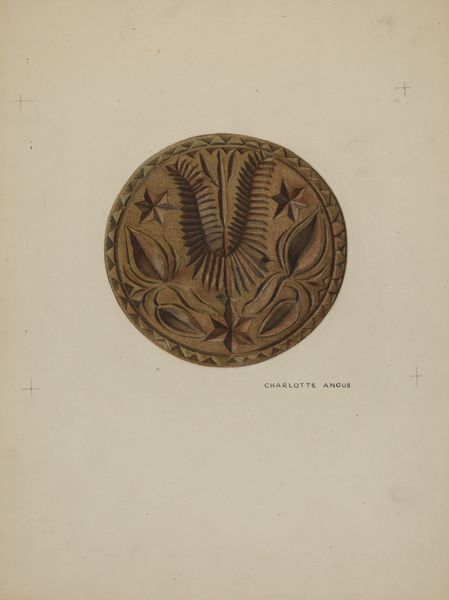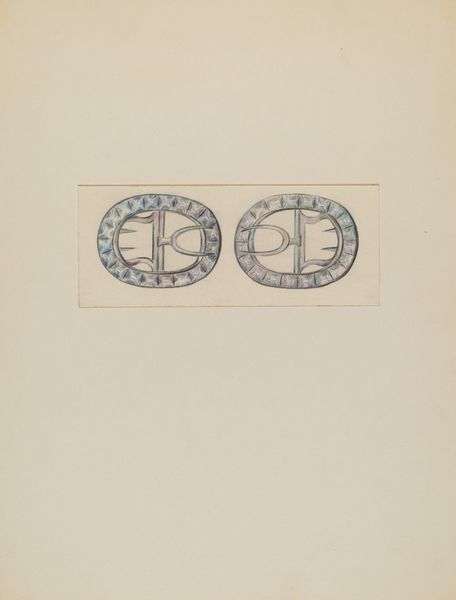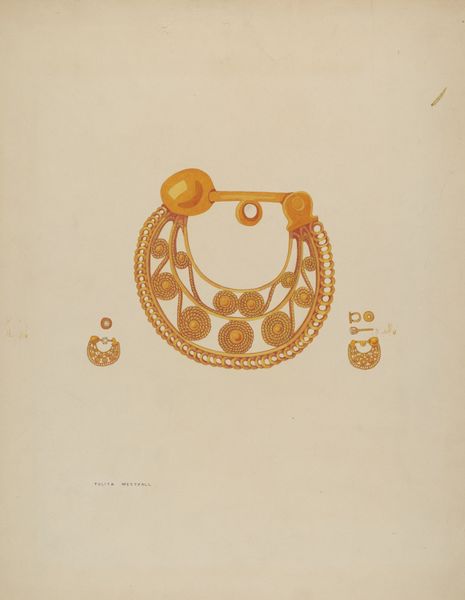
drawing, watercolor
#
drawing
#
watercolor
#
coloured pencil
Dimensions: overall: 28.6 x 22.5 cm (11 1/4 x 8 7/8 in.)
Copyright: National Gallery of Art: CC0 1.0
Curator: Looking at "Cup Plate", an intriguing drawing by Roberta Elvis around 1936, executed in watercolor and coloured pencil. My first thought goes to the broader history of decorative arts being depicted, elevated by the fine art context here. Editor: It strikes me as simple yet compelling. The blue gives it a dreamy, almost ethereal quality, and those tiny heart details... there is an echo of industrial craft married to almost folksy imagery, but they seem worlds apart in many ways too. Curator: Indeed! What’s fascinating is considering the socio-economic implications. We see these common items represented – was this part of an attempt, like the Index of American Design, to enshrine everyday aesthetics as valuable pieces of a larger cultural heritage? Editor: Precisely. It reflects a specific moment in history. The representation of domestic objects is fraught. The romanticizing of objects can gloss over difficult labor practices and, also consider the way in which consumption patterns influence identities. The hearts, in this context, take on additional resonance; there is care taken when reflecting them through industrial material but what story do we miss or do we reify through nostalgia? Curator: It is remarkable how much a simple cup plate, rendered with such careful technique, can reveal about the cultural values of its time. This invites conversation about access, the politics of sentimental objects. Editor: Right, the piece is more than just a pretty plate. We are also viewing class, access, industry. Its creation in 1936 speaks volumes about a need to capture, or even to reclaim, facets of a simpler domesticity that can still touch us today, even as we remain critically engaged. Curator: Well said. The seemingly straightforward choice of object, rendered in delicate washes of blue, sparks endless avenues for historical and cultural examination. Editor: Ultimately it reminds us that art, even in its humblest forms, can be an active form of socio-cultural dialogue through a representation of domestic craft and a lens for looking back on its contextual landscape.
Comments
No comments
Be the first to comment and join the conversation on the ultimate creative platform.
